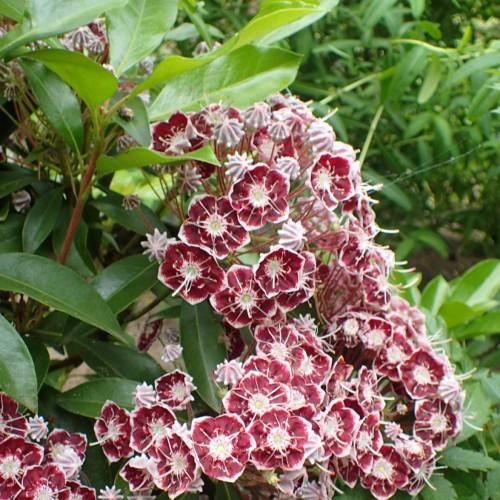
mountain laurel
Kalmia latifolia 'Bullseye'
Cycle:
Perennial
Watering:
Average
Hardiness Zone:
4 - 9
Flowers:
Flowers
Sun:
Part shade
Leaf:
Yes
Growth Rate:
Low
Maintenance:
Moderate
Poisonous To Humans:
Yes
Poisonous To Pets:
Yes
Thorny:
Yes
Invasive:
Yes
watering
Mountain laurel (Kalmia latifolia 'Bullseye') needs moderate amounts of water to thrive - about 1-2 inches of water per week is sufficient. During the growing season, from spring to autumn, aim to water this plant twice a week if there is no rain. During hot/dry periods, water more frequently. In winter, water once every few weeks as the plant enters dormancy. When watering, be sure to water at the base of the plant to ensure the roots get the water they need. During extended droughts, supplement natural rainfall with extra water.
sunlight
Mountain laurel (Kalmia latifolia 'Bullseye') prefers a full sun to partial shade location. This plant should be placed in a spot that receives at least 4 to 6 hours of direct sunlight every day. If you plan on growing your mountain laurel in a shady area, it is best to look for varieties that feature an extended flowering period since they need more light to bloom. For optimal growth and flower production, providing at least 8 hours of sunlight is preferred.
pruning
Mountain laurel (Kalmia latifolia 'Bullseye') should be pruned during the winter or early spring, shortly after blooming. The goal of pruning should be to maintain its natural shape while removing dead, damaged, or diseased branches. Light pruning of new shoots can also be performed to keep the desired size. Avoid pruning away more than 25% of the total plant mass per year as this could lead to stress and shock.
